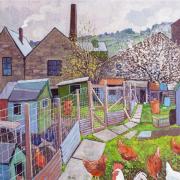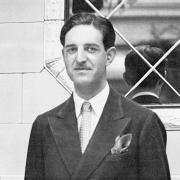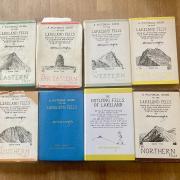Our resident historian Dr Derek J. Ripley charts the rise and fall of the region’s newspaper industry
At a time when newspaper readership is on the decline and many prefer to get their news from the wireless, the internet or the woman on the tills at Booths, it is astounding to think that Lancashire once boasted over 10,000 regular daily or weekly newspapers.
The earliest were printed by fish and chip shops to entertain customers as they made their way home. People became addicted to salacious gossip, vexatious tittle-tattle and adverts for donkey-stones.
Staff wrapped portions of chips in only half a page, forcing patrons who wanted to complete their reading to purchase more chips or ‘supersized’ portions. Rising rates of obesity can be dated to this period - a trend that is only now beginning to abate.
One day, Rupert Murdstone, a young businessman from Birkdale, was in the queue at the Southport branch of Harry Rumsden’s when he was struck by an idea that was to revolutionise the fledgling newspaper industry. Why not sell the newspapers separately from fish and chips? His Birkdale Courier and Argus was the first mass-circulation newspaper published in Lancashire, with a readership of almost 200. Within weeks, businessmen in other towns began to emulate Murdstone’s success and it wasn’t long before towns such as Wigan had as many as 50 newspapers. One even catered for the tiny French community during the 1920s – mainly miners, pastry chefs and furniture polishers.
Competition for readers was fierce and circulation battles were common. In May 1928, the editor of the Preston Morning Gazette and Chronicle was arrested outside a public house following a scuffle with his rival, the editor of the Preston Afternoon Gazette and Chronicle. Each claimed the other had infringed copyright by publishing candid daguerreotypes of Hollinwood screen actor Roger ‘Fatty’ Arbuthnot with a bowl of profiteroles.
The Lancashire public’s desire for stories about crime, celebrity diets and the financial improprieties of politicians could not be sated. It may be hard for modern readers to believe, but so voracious was their appetite that newspapers soon found themselves actually having to manufacture stories. When their journalists’ imaginations began to dry up, editors realised they would have to create the news themselves. Many embarked on ill-advised crime-sprees, fad diets or stood for election to local town councils, all in a desperate attempt to fill pages.
In the 1920s newspapers began to feature competitions with lavish prizes. Most famously, Formby music hall comedian Larry Worthless was paid by the Chorley Examiner to visit towns and villages in the district.
Readers holding copies of the newspaper were invited to approach him and say: ‘You are Worthless and I claim my 2/6d.’ As very few people outside of Southport knew what Larry looked like, innocent strangers were approached and at least 16 were hospitalised after a brawl broke out in a Coppull tea rooms.
Worthless himself was miles away at the time taking a break in the Royal Elm in Little Wheelton, but he was nonetheless convicted of inciting a riot and the Examiner was sued for damages.



























